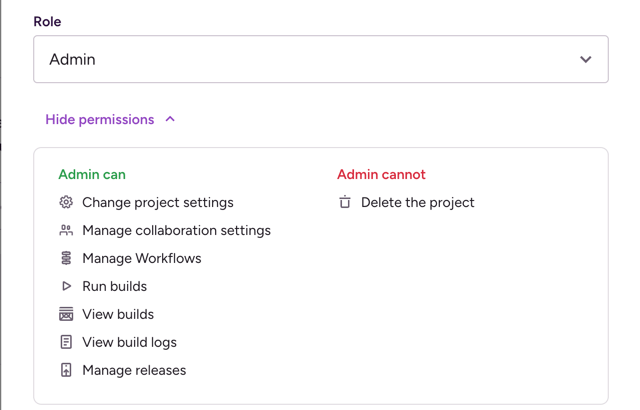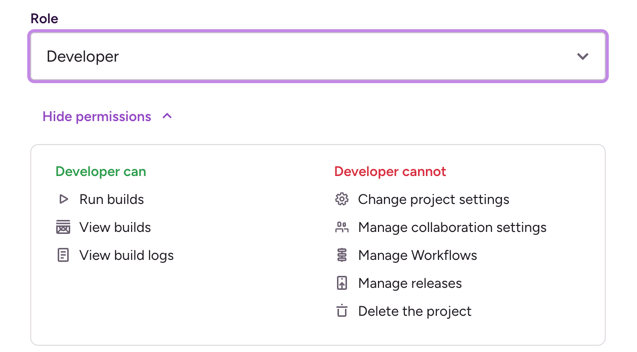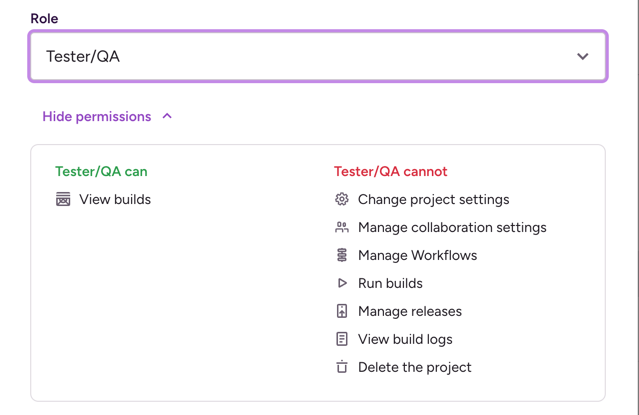Roles and permissions for Bitrise CI
Bitrise apps have user roles defined on their team. They limit what you can and cannot do with an application. The same user can have different roles on different projects.
Roles provide access control on Bitrise: they limit what actions a user can and cannot perform on a Bitrise project. Bitrise CI has its own dedicated roles.
Release Management
This page is about roles and permissions for Bitrise CI.
Release Management has its own roles and permissions: the only role they share with Bitrise CI is that of the project admin. For more information, see Release Management roles and permissions.
Roles work on a project basis: the same user can have different roles on different projects.
You can also assign roles to workspace groups. The roles work the same way and each user within a group receives all permissions associated with the group's assigned role.
There are four types of roles that you can assign to a user on a project's team:
-
Full access to Release Management
A project admin has full access to both the project's Bitrise CI configuration and its Release Management apps, too!
In addition, each project has Owners.
Owners
Bitrise projects are owned by Workspaces. On the project's team, users who are owners in the Workspace have the owner access right to the project.
Owners have unlimited access to projects. Only owners can destroy projects or transfer the ownership of projects, and only they have access to payment information.
Admins
Here’s the role cheatsheet for admins of a project's team:

A project admin cannot delete a project but can invite other members to work on the project in two ways:
-
They can add workspace groups to the project team: Adding Workspace groups to a project.
-
They can invite outside contributors to the team: Adding an outside contributor to a project.
The admin can also give admin rights to other users. However, they cannot transfer ownership of the project: only Owners can do that.
Admins are able to manage the project's contributors and their roles, including Release Management roles, such as Release Manager and App Tester.
Platform Engineers
Here's the role cheatsheet for Platform Engineers:

Platform Engineers can do everything that Developers can, and in addition to that, they can also edit Workflows. They can't access the project settings, manage team members or billing, and they can't delete the project.
Developers
Here’s the role cheatsheet for developers:

Developers cannot change team member roles, add new team members, remove existing team members or create, edit or delete Workflows. They can, however, run builds and view build logs.
They have no access to sensitive data such as payment information, access tokens or even webhooks.
Testers/QA
Here’s the role cheatsheet for testers/QA:

Testers can only view builds. They cannot access build logs and they cannot modify the project in any way or form.
They have no access to sensitive data such as payment information, access tokens or even webhooks.